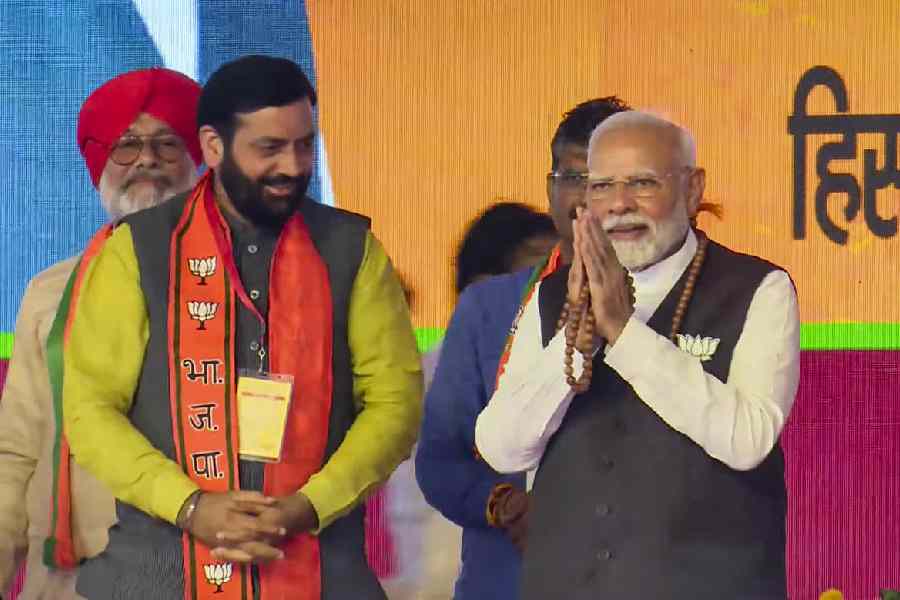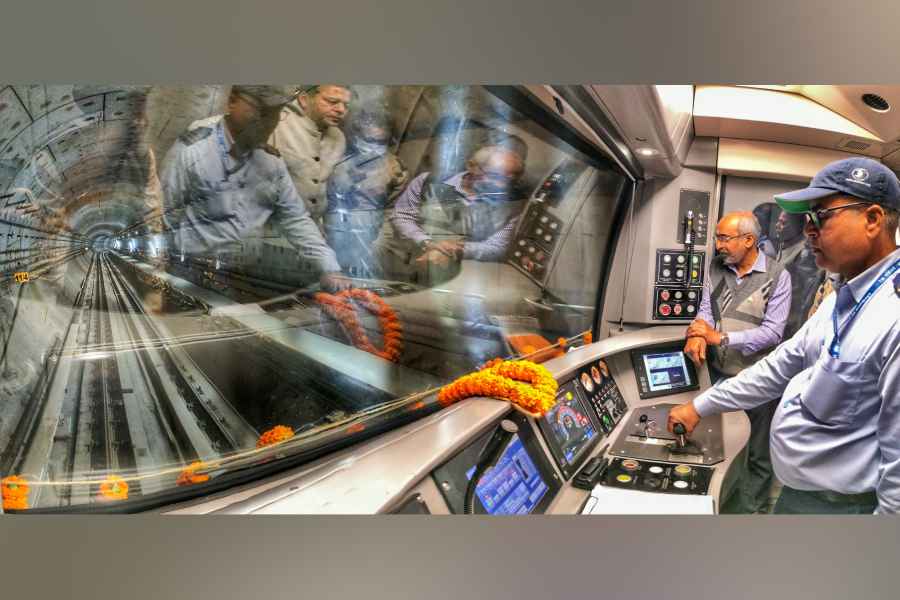Praveen Kashyap, who runs a soft drinks and cigarette kiosk in Gohana market, bristles when reminded of Prime Minister Narendra Modi’s claim at an election rally that a Congress victory would spell “ruin” for Haryana.
“Has the BJP turned Haryana into swarg (heaven) in 10 years?” the young man asks. “Na dukandari hai, na naukri (There is neither business nor jobs).”
He challenges this correspondent to find one shop owner in the market who can honestly claim his profit has increased under BJP rule. “You’ll find none.”
Kashyap says he voted BJP in the past two Assembly elections but this time wants “badlav (change)”.
The polls in Haryana, which adjoins Delhi, come just four months after the general election reduced the BJP to 240 seats in the 543-member Lok Sabha, denying it a majority. The Haryana results can have an impact on two other states, Maharashtra and Jharkhand, where elections are expected later this year.
The combined outcome in these three states along with the poll results in the Union Territory of Jammu and Kashmir will indicate whether Brand Modi can weather the setback of the Lok Sabha elections.
Modi has been addressing poll rallies, interacting with party cadres, and trying to assuage the accumulated anti-incumbency of a decade of BJP rule in Haryana.
“Voting for the Congress means putting Haryana’s stability and development at stake and opening the door to ruin,” the Prime Minister told a rally in Gohana on Wednesday.
“The Congress had handed Haryana over to dalal (middleman) and damaad (son-in-law),” he added, alluding to corruption charges against Sonia Gandhi’s son-in-law Robert Vadra.
Modi has focused mostly on the alleged ills of the Congress, the principal challenger to the BJP. In some pockets, the contest has been rendered triangular by players such as the Aam Aadmi Party and the regional outfits Indian National Lok Dal and Jannayak Janta Party.
It’s anyone’s guess how seriously voters are taking Modi’s fulminations against the Congress. The Lok Sabha results seem to have dimmed the Prime Minister’s halo, with local factors and the state government’s performance dominating voters’ thoughts.
Despite a high-pitched campaign by Modi, the BJP could win just 5 of Haryana’s 10 Lok Sabha seats this year, in contrast to the clean sweep achieved in 2019.
Many voters along the nearly 150km stretch between Gohana and Hisar, with its lush green fields and dusty congested markets, expressed discontent with the ruling BJP, mainly over livelihood issues.
“Modiji and his party had made big promises about setting up big industries, creating lakhs of jobs and wiping out corruption. They have failed on all these fronts,” said Rajesh Kumar, a young Dalit, at the Assandh grain market in Karnal district.
A graduate, Rajesh has been desperately seeking a government Group D job. He was headed to the other side of the sprawling grain market, where Rahul Gandhi was to address a Congress rally.
Rahul, in his speech, cited his interaction with a group of youths from Haryana working in the US. He stressed how the lack of jobs and entrepreneurial opportunities in Haryana was prompting many among the young to spend lakhs —cobbled together by selling their land — to enter the US illegally.
Outside the rally venue, farmer Kuldip Singh Rana described how farmers had received short shrift during the 10 years of BJP rule in the state. He cited a purported meeting between a farmers’ body and then chief minister Manohar Lal Khattar.
“We told Khattarji that we should get a higher price for our paddy since rice was selling at a very high rate in the market. He told us that we should make rice from paddy and sell it in the market,” the farmer said.
“The chief minister didn’t know that machines worth crores of rupees are needed to mill paddy into rice. How can poor farmers buy those machines?”
The BJP replaced Khattar, a Punjabi, with the OBC Nayab Singh Saini just ahead of the general election, hoping to counter the palpable voter anger and pitch the polls as a battle between Jats and non-Jats.
Saini has come up with a host of populist schemes such as a ₹2,100 monthly dole for women, cheap gas cylinders at ₹500, scooters for college girls, and guaranteed government jobs for demobbed Agniveers.
While these schemes, along with the efforts to consolidate the non-Jat voters, appear to have paid some dividends, BJP managers acknowledged that a mood for change continued to dominate on the ground.
“We have recovered a lot of ground in the past one week but our internal surveys still show that our vote share is behind the Congress’s,” a key BJP leader in Sirsa said.
The prospect of losing Haryana to the Congress troubles the BJP since it can add to the perception of Brand Modi being on the decline. Besides, a Congress victory would further polish Rahul’s image as the challenger to Modi.











